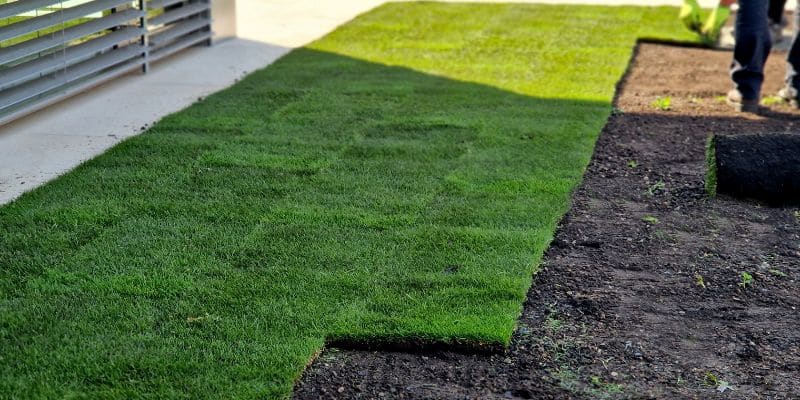hello world!

Artificial turf has come a long way from its early days. No longer a fake-looking substitute for natural grass, it has evolved into a versatile, practical, and aesthetically pleasing solution for various spaces. Whether you’re tired of the endless cycle of mowing and watering your lawn or envisioning a lush green area in an otherwise challenging location, artificial turf offers an answer.
In this guide, we’ll cover everything you need to know about artificial turf—from how it’s installed to where it works best and the most frequently asked questions about this modern landscaping option.
Artificial turf has grown in popularity for several reasons, the most common being:
For homeowners and businesses alike, artificial turf provides an aesthetically pleasing solution that stands the test of time.
If you’re considering this synthetic ground-covering, you might want to know what installation entails. Generally, it’s not too complicated.
Installing artificial turf involves several key steps to ensure it looks great and performs well for years to come. Here’s a high-level overview:
Professional installation ensures optimal results, but with careful preparation, a DIY approach can also look great.
Artificial turf isn’t just for sports fields. Here are some of the most common and creative applications:
Artificial turf is an excellent choice for homeowners looking to upgrade their landscaping. It creates lush, green lawns that require minimal maintenance while maintaining their pristine appearance year-round. It is particularly useful in dry areas where natural grass struggles to thrive. Artificial turf also reduces mud and bare spots, making it handy for families with kids or pets.
Synthetic grass withstands the wear and tear caused by energetic pets and is resistant to digging. Cleanup is easy, as artificial turf drains well and can be rinsed with water to remove waste. Many turf products are specifically designed for pet use, incorporating antimicrobial properties to reduce odours and bacteria, ensuring a safe and clean environment for your furry friends.
Artificial turf is a popular option for playgrounds, offering a soft and safe surface for children to play on. Unlike natural grass, it doesn’t form puddles or become slippery after rain, reducing the risk of accidents. The durable, cushioned material also provides excellent shock absorption, which is essential for areas where children run and climb. As a bonus, no grass stains!
Businesses are increasingly turning to artificial turf to beautify their outdoor areas. Whether it’s an outdoor seating nook, a rooftop garden, or a walkway, it’s a cost-effective way to maintain a professional, polished look without the ongoing expenses associated with lawn care. The versatility of artificial turf also allows businesses to create unique designs or branded green spaces.
Sports fields are one of the most common applications for artificial turf due to its ability to withstand heavy use. Whether for soccer, football, or baseball, artificial turf provides a consistent playing surface that holds up under intense activity and various weather conditions. The durability and uniformity of the material minimize disruptions caused by muddy or uneven ground, making it a reliable choice for athletic facilities.
Artificial turf is not limited to traditional landscaping or athletic uses. It’s also a popular choice for creating indoor putting greens for golf enthusiasts, adding greenery to decorative walls, or even serving as a base for art installations.
Although artificial turf is low-maintenance, a little care goes a long way in preserving its appearance and functionality:
With these simple steps, your artificial turf can stay vibrant and inviting for years.
Most artificial turf products last 10 to 20 years, depending on the quality of materials and the level of maintenance.
Yes, artificial turf is designed to be safe for both pets and children. Many options include antimicrobial properties to reduce bacteria and allergens.
Artificial turf is built to withstand heat, cold, rain, and snow. Proper drainage systems prevent waterlogging and damage.
Yes, artificial turf can heat up under direct sunlight. Using shade structures or cooling infill materials can mitigate this.
Costs vary based on the type of turf, area size, and installation method. Generally, expect to pay between $5 and $20 per square foot.
DIY installation is possible for small projects, but professional installation is recommended for larger or more complex areas if you want it to look flawless.
Artificial turf conserves water and eliminates the need for fertilizers and pesticides. However, it’s important to recycle the material at the end of its lifespan to minimize environmental impact.
Ready to enjoy a low-maintenance, versatile landscape solution? Whether you’re planning a residential project, upgrading a commercial property, or rethinking your outdoor space, artificial turf delivers unmatched beauty and practicality. Explore the possibilities with Hamilton Builders’ Supply—your partner for all your landscaping needs. Contact us today!